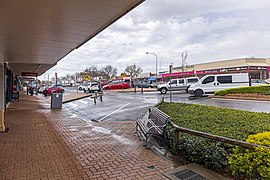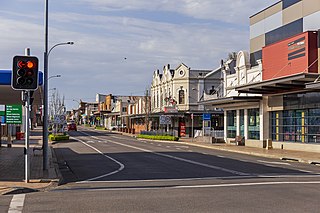
Cessnock is a city in the Hunter Valley of New South Wales, Australia, about 52 km (32 mi) by road west of Newcastle. It is the administrative centre of the City of Cessnock LGA and was named after an 1826 grant of land called Cessnock Estate, which was owned by John Campbell. The local area was once known as "The Coalfields", and it is the gateway city to the vineyards of the Hunter Valley, which includes Pokolbin, Mount View, Lovedale, Broke, Rothbury, and Branxton.

Maitland railway station is located on the Main Northern line in New South Wales, Australia. It serves the city of Maitland opening on in 1880 as West Maitland being renamed on 1 April 1949. It is the junction station for the Main Northern and North Coast lines. It was added to the New South Wales State Heritage Register on 2 April 1999.
The South Maitland coalfields was the most extensive coalfield in New South Wales until the great coal mining slump of the 1960s. It was discovered by Lieutenant-Colonel William Paterson's party when they were engaged in an exploratory visit to the Hunter Valley during July 1801.
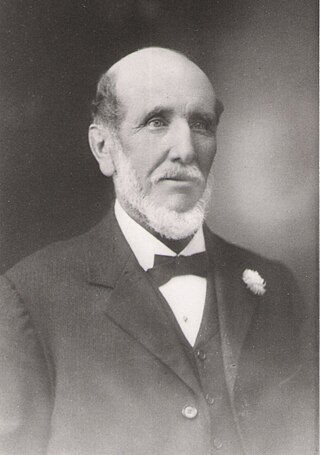
John Scholey was an extensive landed proprietor, prominent businessman, colliery owner, Director of Aberdare Collieries, and a Mayor. He was a Justice of the Peace and member of the Newcastle Land Board, a division of the New South Wales Justice Department.
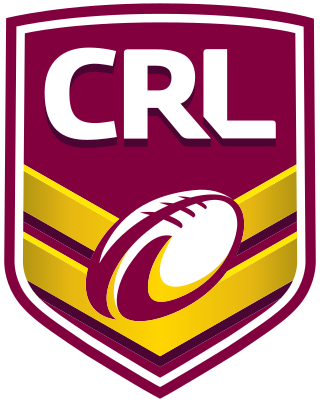
The Country Rugby League of New South Wales (CRL), formed in 1934 and disbanded in 2019, was the governing body for the sport of rugby league football in areas of New South Wales outside the Sydney metropolitan area until it merged with NSW Rugby League in 2019. The CRL was superseded by 6 NSWRL Country Divisions represented by 4 members of the nine-person NSWRL board. Despite its name, the CRL also governed rugby league in the Australian Capital Territory. Apart from selecting a Country Origin side to play in the annual City vs Country Origin game, the CRL administered many senior and junior competitions across the state.
The Newcastle Rugby League is a local rugby league football competition in Newcastle, Australia. It is one of the oldest rugby league competitions in Australia, founded in 1910. A Newcastle representative team was also assembled from players in the League during most of the 20th century. The first grade competition also comprises the NSWRL Presidents Cup Northern Conference.

Newcastle bus routes connect suburbs in and around Newcastle and Lake Macquarie, about 100 kilometres north of Sydney.
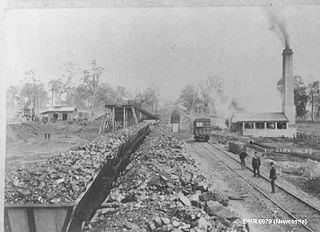
The South Maitland Railway was once an extensive network of privately owned colliery and passenger railway lines which served the South Maitland coalfields in the Hunter Region of New South Wales, Australia and were the second last system in Australia to use steam haulage, having used steam locomotives until 1983.

The Richmond Vale Railway was a 4 ft 8+1⁄2 in colliery railway line in the Hunter Valley of New South Wales, Australia, servicing coal mines at Minmi, Stockrington, Pelaw Main and Richmond Main. It was over 26 km (16 mi) long and passed through three tunnels, and was the last commercially operated railway in Australia to use steam locomotives.
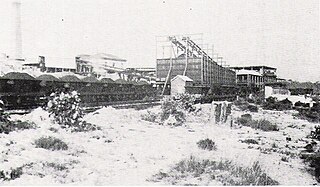
Pelaw Main is a hamlet a few kilometres south-west of Kurri Kurri, in the Hunter Region of New South Wales, Australia. It owes its origins entirely to the colliery there of the same name. It had a population of 1,027 in 2011
George Henry Neilly was an Australian politician. He was a member of the New South Wales Parliament from 1954 to 1977. He was a member of the Labor Party (ALP).
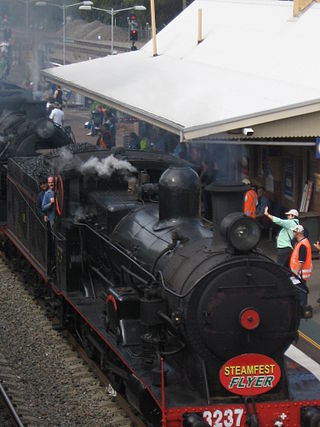
The Hunter Valley Steamfest is one of the major events in the New South Wales steam locomotive season and also one of the major events held in Maitland, in the Hunter Region. Held over two days in April, it is usually attended by steam locomotives from the Canberra Railway Museum, NSW Rail Museum and East Coast Heritage Rail and railmotors from the Rail Motor Society.
Stanford Main No. 2 Colliery, also known as Paxton Colliery, was a coal mine located at Paxton, New South Wales, Australia. The mine was named Stanford Merthyr No. 2 until 1 May 1931. The mine was started in the 1920s, by the East Greta Coal Mining Company. The Greta coal seam has been mined using bord and pillar mining methods. Coal was transported from the mine via the Paxton Branch of the South Maitland Railway.

The Richmond Vale Railway Museum operates a railway and museum located at the heritage-listed Richmond Main Colliery south of Kurri Kurri, New South Wales. The museum is a volunteer non-profit organization, formed in 1979 with the aim of preserving the Richmond Vale railway line and the mining heritage of J & A Brown and the Hunter Valley.

Gillieston Heights is a suburb of the City of Maitland local government area in the Hunter Region of New South Wales, Australia, approximately 5.1 km (3.2 mi) from the Maitland CBD. Prior to 1967, the village was named East Greta however this was changed to honour former Maitland mayor and member of the New South Wales Legislative Assembly John Gillies following a poll of residents. At the 2021 census, Gillieston Heights had a population of 4,796.
J & A Brown was an privately owned Australian coal family firm founded by James Brown (1816–1894) and Alexander Brown (1827–1877).
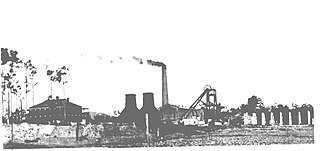
Richmond Main Colliery is a heritage-listed former coal mine and now open-air museum at South Maitland Coalfields, Kurri Kurri, New South Wales, Australia. It was designed by the staff at J & A Brown's Engineering Workshops at Hexham under the direction of John Brown and built from 1908 to 1913 by J & A Brown. The site now operates as the Richmond Main Heritage Park, including the Richmond Vale Railway Museum and Richmond Main Mining Museum. The property is owned by Cessnock City Council. It was added to the New South Wales State Heritage Register on 2 April 1999.
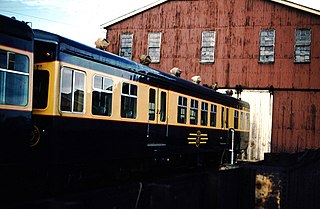
South Maitland Railway Workshops is a heritage-listed former railway workshops and now museum and industrial site at Junction Street, Telarah, New South Wales, Australia. It was added to the New South Wales State Heritage Register on 2 April 1999.
Kearsley is a village in the City of Cessnock, in the Hunter Region of New South Wales, Australia. Kearsley is located 5.7 kilometres south-east of the town of Cessnock, NSW and is adjacent to Werakata National Park. The village was named after William Kearsley, a prominent member of the New South Wales Legislative Assembly and official in the miner's union.
